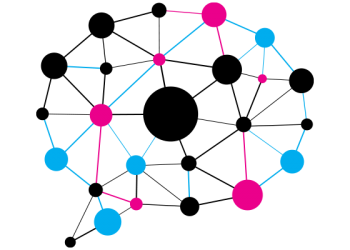As a franchise owner, it’s crucial to understand how your customers come to purchase your products or services. We call this often winding and a sinuous path the customer journey. But unlike the post-war days of marketing (which featured only a handful of traditional advertising mediums), the customer journey is a lot less linear today.
In the 21st century, our hyper-connected world has allowed for the paving of a multitude of consumer pathways. Online warehouses and digital streaming from companies like Amazon has created an on-demand attitude toward a purchase, as well as a comparative mindset in regard to pricing. Predictably, marketers feel as if they are on shaky ground. And, according to Millward Brown Digital, 55% of them aren’t confident in their company’s understanding of the customer journey. These are the professional’s franchisees hire to take care of this kind of stuff!
Don’t worry. While touchpoints (moments in which you communicate with your clientele) will differ based on your industry, the basic components of the customer’s journey aren’t going anywhere for a while. Let’s go over some simple marketing terms to increase your understanding of the customer’s point of view.
Start with a buyer persona.
In short, a buyer persona is a representation of your ideal, real-world customer. Now, this term might seem like the kind of fluff marketing you hear from ad agencies with bean bag chairs and iMacs in every room. But buyer personas are an actual thing; in fact, there one of the most effective advertising tools around.
Why you ask? Buyer personas are based on qualitative, detailed marketing research. They aren’t just chosen arbitrarily – otherwise, your ideal customer would be based off on anecdotal experience (which can contain blind spots and other factual inconsistencies).
A successful buyer persona will include demographics like age, gender, career, geographic location, etc. The greater the specificity, the better your results. The goal is to accurately predict which touchpoints you’ll need to initiate so that you can move a customer down the marketing funnel. For instance, to engage with a college-educated millennial persona, you’ll have better luck inspiring action via social media or word-of-mouth, rather than through a newspaper listing.
Let’s get familiar with the five stages of the customer journey.
Now that you have your buyer persona created and ready for implementation, it’s time to plot a course for your target consumer.
1. Awareness
Everyone has to start out somewhere. In this stage, your buyer may not even be aware they have a problem. Or maybe they are mindful of a particular pain point or frustrating annoyance but aren’t aware a solution exists.
To cater to shoppers in this stage of the journey, ad copy or content should remain primarily educational. You can’t strongarm consumers into buying something they know nothing about.
Offering up free guides, blogs, or other content in exchange for contact information is a brilliant opportunity for your business to step into the role of a trustworthy advisor, rather than a predatory institution.
2. Consideration
So, now your customer knows who you are, and what you can do for them. But they’re still deliberating! Relax, it’s not you – after all, it’s only human to ponder the choices we might make.
Whether you like it or not, customers will start comparing your product or service to the competition. At this point, it’s good practice to distinguish your company from others by communicating unique selling points. Case studies, tutorials, follow-up emails, and direct mail will all work wonders for this purpose, so long as your services are positioned as one-of-a-kind, rather than run-of-the-mill.
3. Conversion
Here it is. The moment you’ve been waiting for. The customer is ready to buy, they just need a gentle nudge in the right direction. Often, that can be as easy as a simple signup sheet or a phone consultation. For digital-based services, you may want to offer a free trial offer linked to credit card information.
4. Retention/Purchase
This is an ongoing phase. Once your client has passed through the conversion stage, you’ll need to ensure they keep coming back for more. That often means conveying regular information about the company, e.g. blogs or weekly emails.
Have an upgraded version of your service? If you highlight new features and exclusive benefits, you may be able to get your customers to upgrade to a larger package.
5. Advocacy
Not every customer reaches this part of the journey, unfortunately. But that’s what makes advocacy such a coveted stage of the purchasing process.
This is what advertising companies refer to when they talk about brand loyalty. Not only does your ideal customer continue to spend money at your business, but they also actively choose to recommend your products and services to friends and family.







